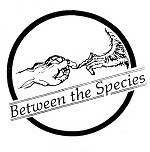
Echinochloa is a very widespread genus of plants in the grass family and tribe Paniceae. Some of the species are known by the common names barnyard grass or cockspur grass.
Bipolaris glycines, or Drechslera blight, is a fungal plant pathogen of soybeans.

Setosphaeria rostrata is a heat tolerant fungus with an asexual reproductive form (anamorph) known as Exserohilum rostratum. This fungus is a common plant pathogen, causing leaf spots as well as crown rot and root rot in grasses. It is also found in soils and on textiles in subtropical and tropical regions. Exserohilum rostratum is one of the 35 Exserohilum species implicated uncommonly as opportunistic pathogens of humans where it is an etiologic agent of sinusitis, keratitis, skin lesions and an often fatal meningoencephalitis. Infections caused by this species are most often seen in regions with hot climates like Israel, India and the southern USA.

Setosphaeria turcica is the causal agent of northern corn leaf blight in maize. It is a serious fungal disease prevalent in cooler climates and tropical highlands wherever corn is grown. It is characterized by large cigar shaped necrotic lesions that develop on the leaves due to the polyketide metabolite monocerin.

Acanthochelys is a genus of turtles, the spiny swamp turtles, in the family Chelidae, subfamily Chelinae, found in South America. Until recently, the species of this genus were considered to be members of the genus Platemys, but were moved to the resurrected genus originally described by Gray (1873) based on the type species by monotypy Acanthochelys spixii.

Pleosporaceae is a family of sac fungi. They are pathogenic to humans or saprobic on woody and dead herbaceous stems or leaves.

Fungal meningitis refers to meningitis caused by a fungal infection.
Luttrellia is a genus of fungi in the family Halosphaeriaceae. The genus contains four species.
Setomelanomma is a genus of fungi in the family Phaeosphaeriaceae. This is a monotypic genus, containing the single species Setomelanomma holmiiM. Morelet (1980)
Keissleriella is a genus of fungi, that was originally placed in the Massarinaceae family, before being placed in the Lentitheciaceae family.

Monocerin is a dihydroisocoumarin and a polyketide metabolite that originates from various fungal species. It has been shown to display antifungal, plant pathogenic, and insecticidal characteristics. Monocerin has been isolated from Dreschlera monoceras, D. ravenelii, Exserohilum turcicum, and Fusarium larvarum.

Exserohilum curvisporum is a fungal species found during a survey done on water and sediment of the Shatt al-Arab at Basra, southern Iraq. The research was done by Basil A. Abbas under supervision of S. K. Abdullah in 1993.

Exserohilum is a genus of fungi in the family Pleosporaceae. The Exserohilum species are known for causing blight and human immune system diseases. The sexual reproductive states of Exserohilum species are known as Setosphaeria. The type species is Exserohilum turcicum. This genus is among three dematiaceous that are categorized for containing pathogens leading to diseases like phaeohyphomycosis.
Exserohilum antillanum is a species of fungus in the family Pleosporaceae. Found in Cuba growing on plant debris, it was described as new to science in 1995. The specific epithet antillanum refers to the Antillian sea, an old name for the Caribbean Sea. It is most similar in morphology to Exserohilum gedarefense, from which it differs in the size, pigmentation, and ornamentation of its conidia.
Exserohilum curvatum is a species of fungus in the family Pleosporaceae. Found in Venezuela, where it grows on the leaves of Sorghum, it was described as new to science in 1984. It differs from other Exserohilum species by its distinctly curved conidia.
Exserohilum echinochloae is a species of fungus in the family Pleosporaceae. Found in Bangladesh, where it grows on the leaves of Echinochloa colona, it was described as new to science in 1984. It is morphologically similar to Exserohilum monoceras and E. frumentacei, but differs from those species in its longer and wider conidia.
Exserohilum inaequale is a species of fungus in the family Pleosporaceae. Found in Nigeria, it was described as new to science in 1984. It differs from other Exserohilum species in the size, shape, and septation of its conidia. Additionally, the septa are comparatively dark and thick.
Exserohilum oryzicola is a species of fungus in the family Pleosporaceae. Found in Colombia, where it grows on the leaves of Oryza sativa, it was described as new to science in 1984. It is distinguished from other Exserohilum species by its longer and more tapered conidia.
Exserohilum oryzinum is a species of fungus in the family Pleosporaceae. Found in Egypt, where it grows on Oryza plants, it was described as new to science in 1984. It is distinguished from other Exserohilum by its distinctly curved to sigmoid (S-shaped) conidia.

Between the Species: A Journal for the Study of Philosophy and Animals is a peer-reviewed academic journal devoted to philosophical examinations of human relationships with other animals. It is, in part, a continuation of Ethics & Animals (E&A), a journal which ran from 1980 to 1984. Between the Species was founded as a print journal in 1985, published by the Schweitzer Center of the San Francisco Bay Institute/Congress of Cultures. The print version ceased publication in 1996. It was revived as an open access online-only journal in 2002. It is published by the Philosophy Department and Digital Commons at the California Polytechnic State University; Joseph Lynch is the current editor-in-chief.









